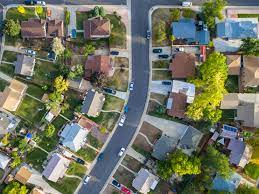Rising interest rates usually mean bad news for homeowners, as the cost of servicing existing mortgages goes up and consumers start to feel the pinch. You’d expect this to have a knock-on effect on house prices – higher rates should mean lower house prices as more people are pushed out of (or unable to enter) the housing market. So why aren’t we seeing a big drop in house prices in Australia?
It looks like the RBA interest rate increases over 2022 and 2023 might be coming to an end as rates have held steady in the last couple of months. A major effect of these rises has been the increased cost of mortgage payments (reportedly up 98%) and the drop in lending for housing, with the ABS reporting a decrease in the value of new owner-occupier home loans by almost 20% since this time last year. You don’t need to be an economist to expect such a big decrease in lending to be followed by a drop in house prices. But the reality is a different story. Nationally, house prices in July 2023 were up 1.3% in 12 months, with Sydney recording an increase of 3.2% in the same period. Interestingly, Sydney also saw almost 10% more market listings than this time last year, making it all the more surprising that prices aren’t lower.
But the reality is a different story. Nationally, house prices in July 2023 were up 1.3% in 12 months, with Sydney recording an increase of 3.2% in the same period. Interestingly, Sydney also saw almost 10% more market listings than this time last year, making it all the more surprising that prices aren’t lower.
There isn’t a singular cause of this phenomenon, rather a range of factors that have contributed. Across the country, there have been a number of influences which have propped up the economy and limited the impact of higher rates, including strong wage growth and low unemployment. This means people are in a better position to absorb higher mortgage costs and are less likely to need to sell, decreasing the supply to the market and keeping prices steady.
At the same time, a very tight rental market could also be contributing. Higher rates of immigration are pushing up rental prices. Property investors can see they’ll get good returns if they can hang on to their houses, and owner-occupiers might be worried that they’ll be paying high rental costs if they had to sell.
As well as this, the dramatic drop in home loans isn’t all it seems – a year ago, the rate of lending was artificially high because of policy decisions and market conditions brought on by the pandemic. Previously low interest rates plus the government’s Homebuilder program (which recently ended) played a part in encouraging higher rates of lending from 2020 to 2022, pushing the total value of lending to rise dramatically in a short space of time. Therefore, the recent drop is more an indicator that things have stabilized – in fact, lending rates are now much closer to what they were before the pandemic.
Another factor that’s keeping house prices on the rise is the increasing cost of construction, up 30% since the end of 2020. This is mainly due to higher material costs and supply chain issues still hanging over from the pandemic days, limiting the supply of new builds and thus the supply of housing available in the market.
If you’re on the lookout for a new home this is not great news as it means there’s unlikely to be an increase in the supply of new houses any time soon, meaning prices will likely continue to rise. But if you’re a property owner looking to sell or rent your place out, you might not suffer the effects of higher rates as much as we’d usually expect.
Please call or email if you have any questions about interest rates or property.
Disclaimer: This publication has been prepared for general information purposes only. It is not specific advice to any particular person. You should consult an authorised Align Financial adviser before making financial decisions.